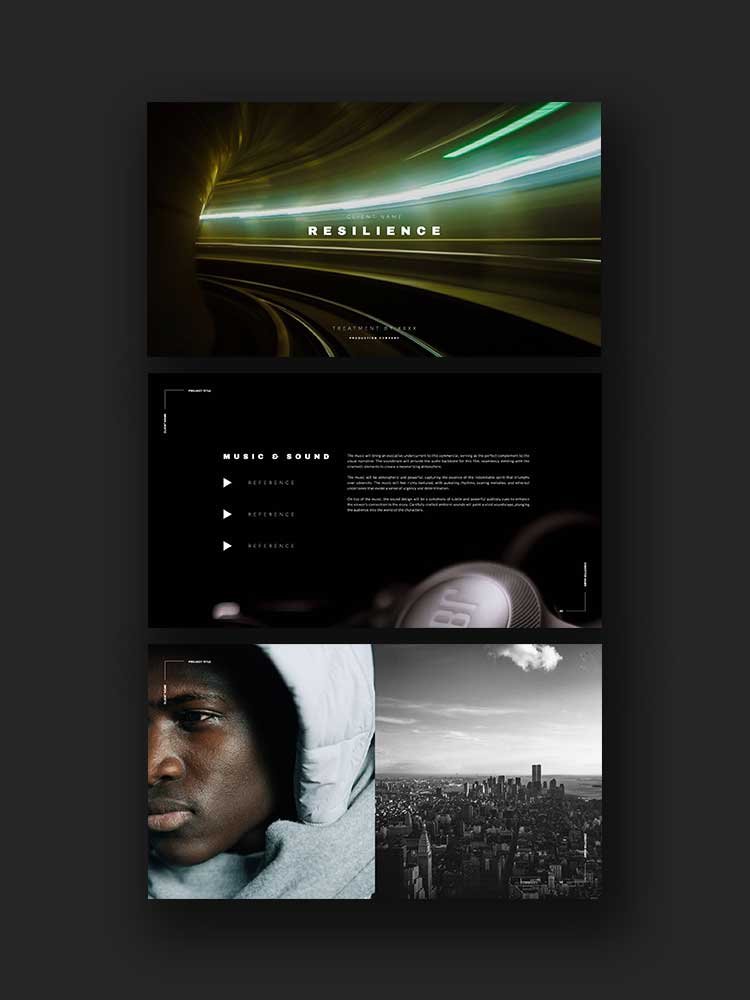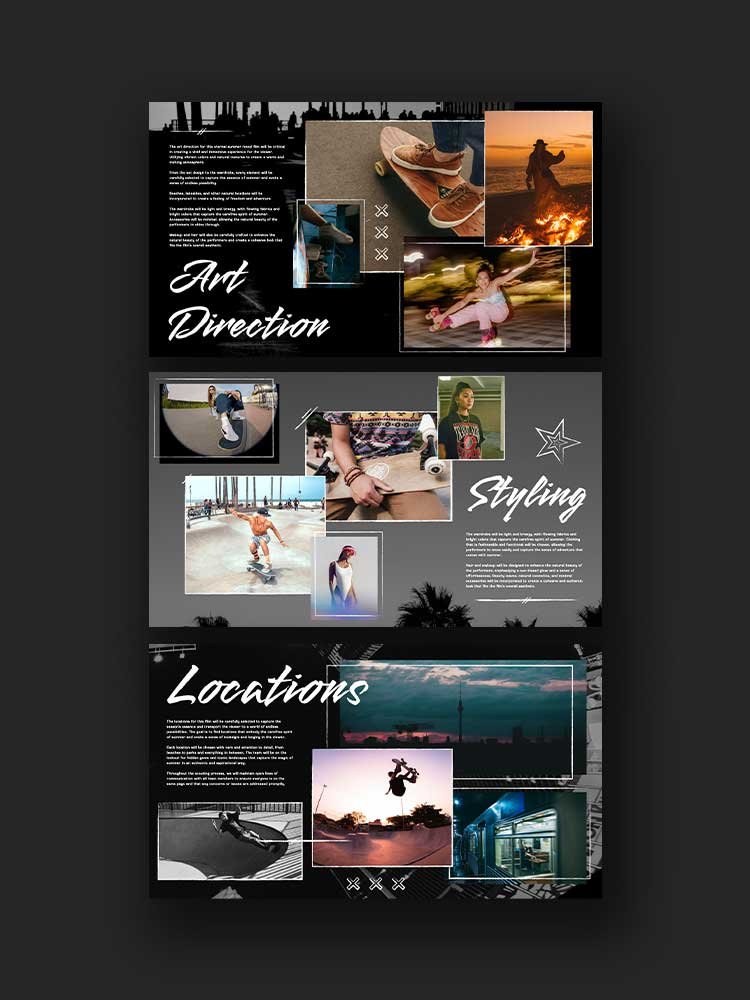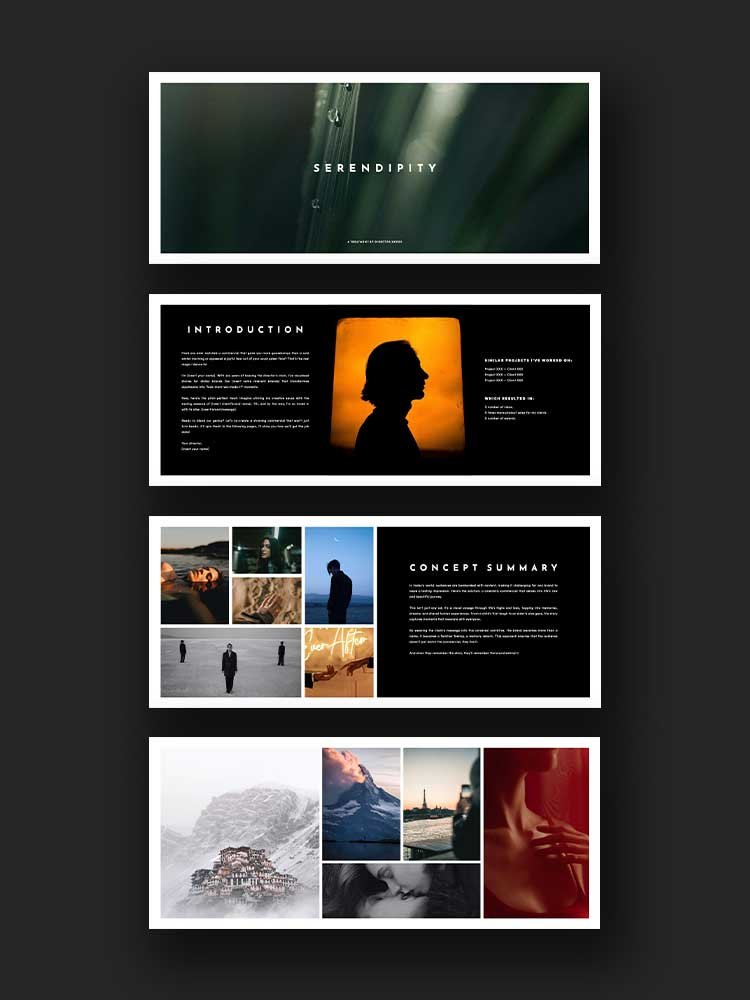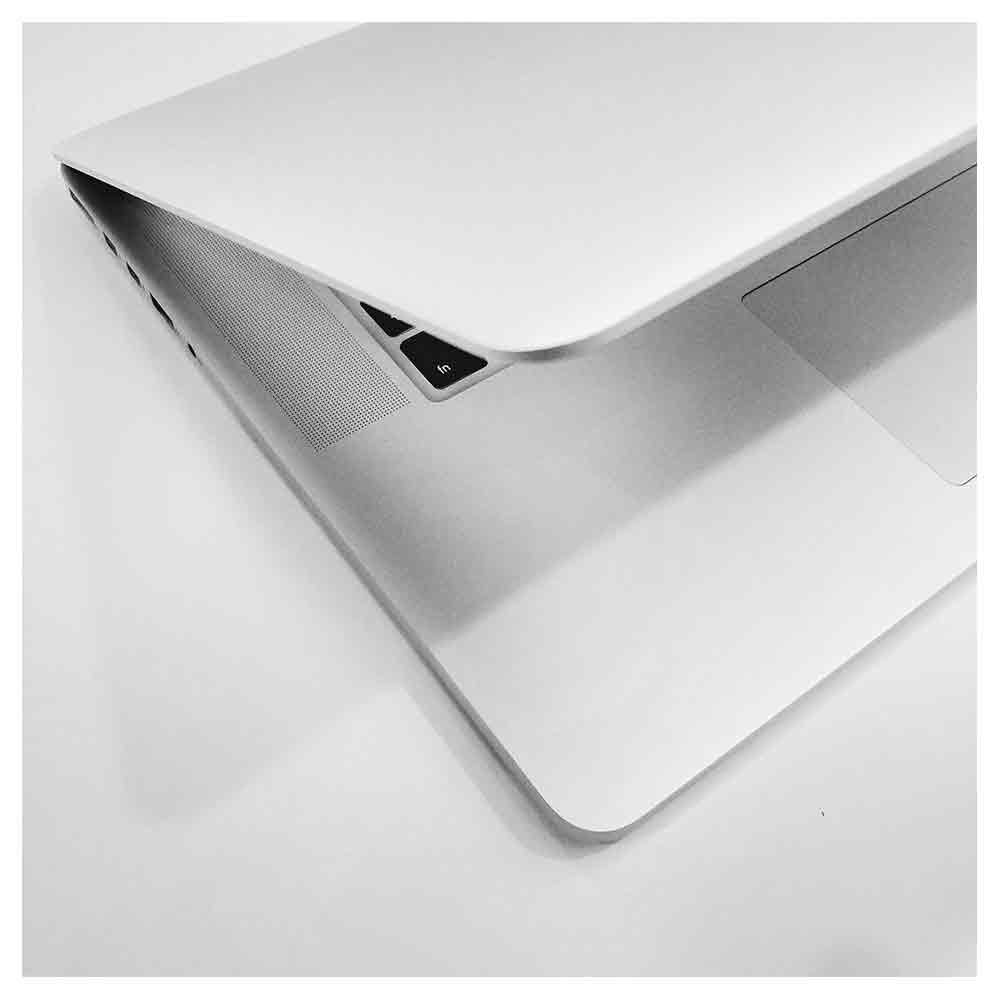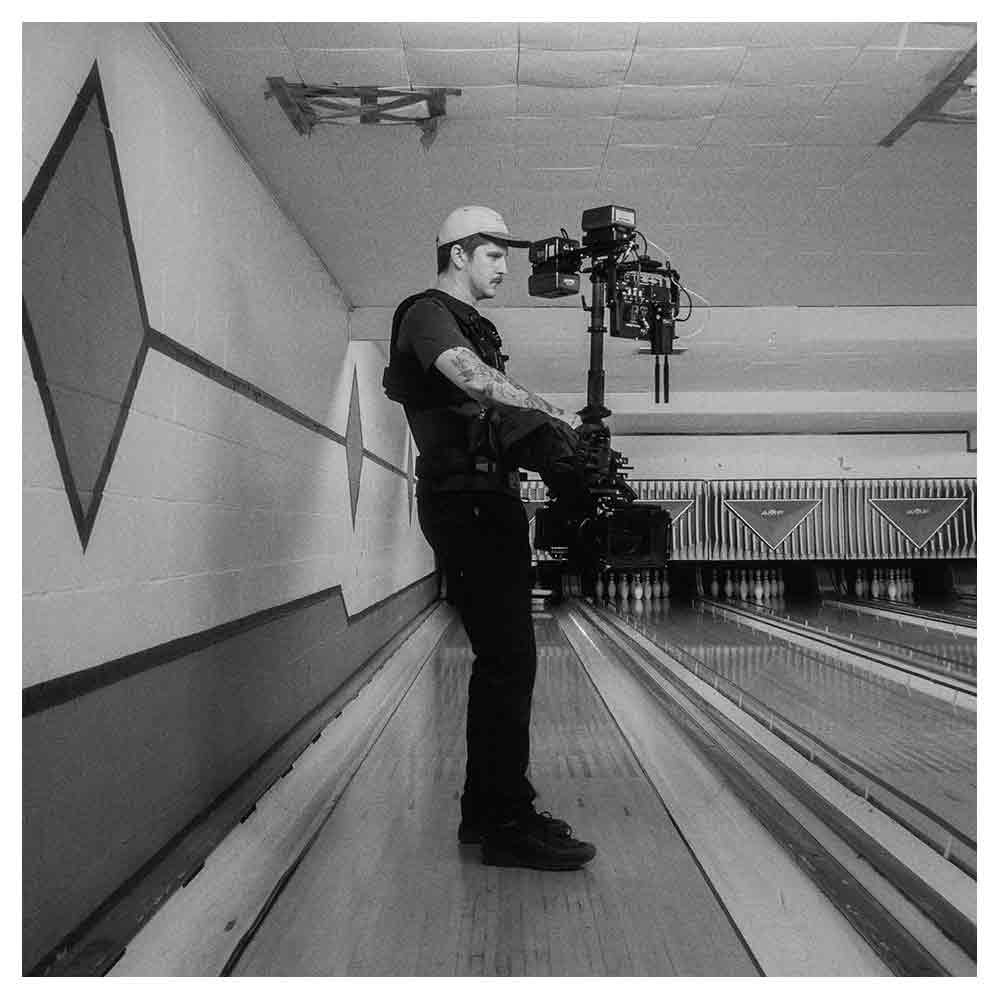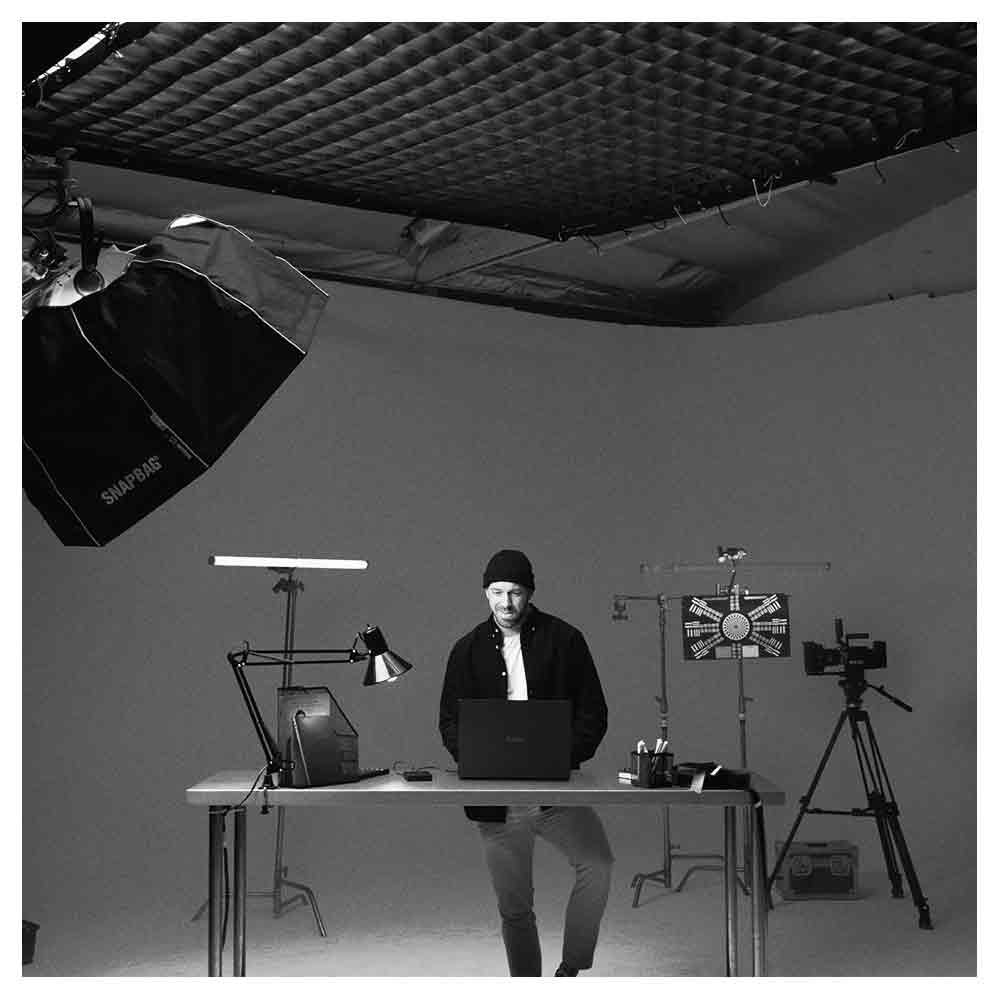What Is A Director's Treatment? (Incl. Director Treatment Templates)
Whether you're directing a film, documentary, TV series, commercial, music video, fashion film, music video, or short film, director treatments are the kick-off point for every production.
But what is a director's treatment, and why are they so important? That's what I'll outline in the article below!
Table of contents:
What is a director's treatment?
In short, a director’s treatment is a (digital) pitch document that outlines the creative vision and ideas for how the final film will look and feel and what it will be about, according to you—the director.
In essence, it's an audition in written words for the project pitch you want to win as a filmmaker. The goal of a director's treatment is to convey a clear picture of the visual style of the yet-to-be-made film.
Anyone who picks up the director's treatment should understand the creative direction immediately and know exactly what you - the director - want to do.
How does the treatment process start?
Production companies usually ask several directors to join the pitching process and share in detail their creative vision and stylistic approach for a new project opportunity.
Clients or creative agencies can ask them to pitch ideas for commercial projects, a TV pilot, music video, or any other type of project. Once the treatment writing request lands on a director's desk, it's up to them to decide whether they want to pursue the opportunity and book a client call to discuss the project details.
Different kinds of treatments
It's good to know that different treatments exist for different projects. Although the approach is somehow the same, the execution isn't.
I will divide the different types of treatments into two sections to make them easy to understand. Of course, this is not 100% accurate, but it helps to give some direction:
Projects shorter than 30 minutes (short films, fashion films, commercials, music videos, etc.)
Projects longer than 30 minutes (fiction films, TV series, etc.)
For the stuff that's longer than 30 minutes, producers, production companies, studios, and executives (basically all the people who control the budget and financials) often require a different film treatment style and layout than the kind of treatment suitable for shorter project formats.
Long Production format treatment
The film treatments for those longer format productions are usually a one or two-pager. These treatments are made by a screenwriter and not the director (unless the director is also the screenwriter).
The goal of these treatments is to make the potential reader interested in reading a word-heavy 30-120 page script, a serious time investment.
Those treatments consist solely of text, explicitly no images, and always follow the same layout.
If you want to understand better how to write and design film treatments for longer format productions, I recommend reading 'Writing Treatment That Sell' by Kenneth Atchity and Chi-Li Wong.
I read this book myself as well, and although the examples and references are a bit outdated (2003), I believed this to be a very detailed outline for how to create treatments that can help you market and sell the finished product of your script to a client, a TV station, streaming service, or a commercial (Hollywood) film studio.
It includes everything you need to know to create an effective and scalable treatment, including characters, plot twists, climaxes, and visual drama.
Short production format director treatment
The director's treatments for shorter formats productions focus more on the filmmaker's creative vision, stylistic approach, and story ideas but are broken down into visually pleasing documents stuffed with eye-catching images and visuals.
Rather than sending your audience a boring email with reference photos to communicate the ideas in your head, this kind of director's treatment functions as a visual look-book to present how everything will fit together and come to life.
Why are director treatments important?
Now you know what a director's treatment is, it's also crucial to understand why there is so much emphasis on these creative pitch documents.
Besides being just a valuable marketing tool for your filmmaker’s creative vision or concept, I believe there are five reasons why treatment writing skills are vital in your filmmaking toolbox.
Director Treatments Are The Project Foundation
Like a house is built based on a thoroughly thought-out planning and construction blueprint, every film production starts with a director’s vision for making the film.
It’s the director’s creative vision, stylistic approach, and ideas on which all other production departments, such as the producer, production designer, cinematographer, stylist, make-up artist, gaffer, colorist, sound designer, music composer, editor, and actors can layer their expertise to bring the project to life for the client.
Director Treatments Are A Creative Vision Sales Tool
Describing what you want to create is just as important as making it. People won't award you the opportunity if you can't explain what you want to do. Like you won't allow someone to build your dream home if they can't describe how they will create it.
That's why it's not always the most skilled director who gets the job, but the one who manages to sell themselves and their project’s vision and ideas the best way.
A good director treatment is your filmmaker's sales tool to help you do that!
Director Treatments Are The Production Roadmap For the Director's Vision
When someone decides to work with you and bring you on board as a creative partner, it becomes your job as the director to guide your crew to create the final product.
Now you can tell every crew member who jumps on board during the pre-production individually about your ideas and what you plan to do. Or, you can send them your director's treatment.
This is why the director's treatments also function as a roadmap for everyone involved.
An invaluable crew guideline in production ensures that everybody agrees fundamentally on the project and how it will look and feel.
Director Treatments Is A Crew Recruiter
A director's treatment also effectively builds excitement about the project and gets your crew involved in the pre-production phase of the project.
This is particularly important when doing a low-budget or passion (read: no money) project! Your treatment can help get your team members on board and function as your crew recruiter.
Director Treatments Are A Creative Exercise
The final reason director treatments are essential to every film production is that they allow you to brainstorm and work out your story.
Creating director treatments and thinking about every aspect of your film is an opportunity to iron out any flaws, identify potential issues and difficulties, give your story ideas and imagination a dry run, flesh out various story possibilities, and spell out your vision as entirely and clearly as possible before you dive into production.
In my experience, the more you think and prepare, the more successful your project will be!
How to make a director’s treatment?
Bottom line, a good director's treatment is a vital document in the filmmaking process. It can help you get your project off the ground by communicating your vision and ideas to potential financiers, producers, and collaborators.
By understanding the components of a good director's treatment and what should be included, you can create a powerful tool that will help you make your movie dreams a reality. But how do you make a director’s treatment?
Funny enough, there is no right or wrong way to make a director's treatment. There is no industry standard for how a director's treatment should look, how long it should be, and what it should include. Everyone is simply doing it their way!
After many years of creating director treatments myself, losing dozens of pitches, and doing lots of research, I found a clear difference between a treatment that has no chance of winning from the start and one that has the potential of landing you the job.
So, to help you get your foot in the door in this hyper-competitive filmmaker landscape, I wrote several blog articles to distill the process for creating pitch-winning director treatments, outsmarting the other directors, and winning the project!

